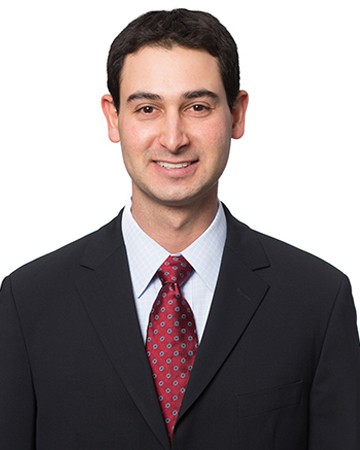Contents
There is a variation in the formula from one country to another, and for that purpose, it becomes necessary to define the term “broad money” to avoid misconceptions. Assertion Ratio of Broad money M3 to gross domestic product has increased in recent yearsReason The penetration of banking services has improved in India.Correct Answerboth right, R explains AQ2. Tabitha graduated from Jomo Kenyatta University of Agriculture and Technology with a Bachelor’s Degree in Commerce, whereby she specialized in Finance. She has had the pleasure of working with various organizations and garnered expertise in business management, business administration, accounting, finance operations, and digital marketing. Broad money is less liquid while narrow money is highly liquid.

To increase the money supply, Central banks such as the Federal Reserve use lower interest rates to stimulate the economy. On the other hand, there is a significant rise in the rate of interest during inflation, and the money supply decreases drastically, ultimately leading to a decrease in prices. The method itself is very flexible for measuring the money supply of an economy. Not only that, but also Broad money helps in the conversion of accounting for cash and other assets into currency.
You may note that, even if an individual chooses to park the cash as deposits with banks, it forms a part of the overall money supply. Did the government’s move to demonetise Rs 500 and Rs 1,000 currency notes improve the balance sheet of Reserve Bank of India ? To understand this scenario, we must learn the interplay of currency, reserve money and money supply. As money supply is connected with ‘circulating money’, only the highly-liquid forms of money like currency and bank deposits are usually considered.
The Federal Reserve in the United States provides two main measures of money – M1 and M2, where M1 is the narrowest and M2 the broadest. This number is multiplied by the amount of reserves to estimate the maximum potential amount of the money supply. For example, from Rs.100 can be multiplied by 5 to generate Rs.500 money supply if Reserve Ratio is 1/5 (20%) or when Money Multiplier is 5. When Reserve Ratio is 1/4 (25%) or when Money Multiplier is 4, that would generate only Rs. 400 as money supply.
M2 and M4 components also include Post-Office deposits as well. M3H is an extra metric created to facilitate comparisons with the ECB’s money definitions. All of the goods in M4 are included and foreign currency deposits in banks and building societies. In Australia, the broadest measure of money is referred to as M3, and it includes all of the components of M1 as well as credit unions, building societies, and banks.
The meanings vary depending on the context in which we use the term. However, we might also use it when referring to just to the least liquid forms of money. Monetary-policy actions generally affect and control narrow money more than broader measures. It also includes the non-cash items that we can convert into cash rapidly.
What is m1 and m2 money?
– M2 is M1 plus short-term time deposits in banks, as well as 24-hour money market funds. Narrow money (M1 & M2) in India includes all notes and coins in circulation and all demand deposit components. Broad Money (M3 & M4) in India includes all components in narrow money and commercial banks net time deposits, term deposits and term borrowings. And we are all running around trying to secure sources of money and earn a living.
- M3 includes coins and currency, deposits in checking and savings accounts, small time deposits, non-institutional money market accounts.
- At the contrary end of the size is M3, which is classified as the most widespread cash distribution.
- It also includes the non-cash items that we can convert into cash rapidly.
- Narrow money (M1 & M2) in India includes all notes and coins in circulation and all demand deposit components.
Additionally, it is the method used to measure the quantity of money in circulation. Broad money is indicated as M3 or M4 while narrow money is indicated as M0, M1 or M2. Countries have varying methods of calculating broad money.
Examples of broad money
It is the connection between financial base and money provide in financial system. The amount cash that banks generates with each unit of cash. It is the ratio of deposits to the reserves within the banking system.

The money provide is the whole worth of cash out there in an financial system at a degree of time. Each nation’s central financial institution might use its own definitions of what constitutes cash for its functions. In economics, broad money is a measure of the money provide that features more than simply bodily cash similar to foreign money and coins . It includes all highly liquid assets along with currency and checkable deposits alongside somewhat more illiquid forms of capital. It further accounts for “near money” like deposit certificates , money market accounts, foreign currencies, Treasury bills (T-Bills), marketable securities, etc that can easily be converted into cash. M3 includes coins and currency, deposits in checking and savings accounts, small time deposits, non-institutional money market accounts.
Factors affecting money supply
The majority of people view money as nothing more than money. However, different parts of the world have quite different conceptions of what money is. Having said that, various nations have varying standards for what constitutes broad money and narrow money. But what exactly differentiates the two from one another? In the United Kingdom, M1 is the narrowest money and consist of bankers’ deposits and the currency in circulation.
M3 includes all of the goods in M1 and additional deposits from building societies. M4 includes all of the goods in M2, as well as wholesale bank and building society deposits. M2 is made up of everything in M0 plus retail bank deposits. M0 is made up of in-circulation money and bankers’ deposits at the Bank of England. Usually, “broad money” is used as a term and less as a composed definition throughout any circumstances.
In current years, some tutorial economists famend for their work on the implications of rational expectations have argued that open market operations are irrelevant. The Broad money includes all public time deposits with all banks, including cooperative banks. In such cases, broad money helps the central bankers and policymakers to grasp potential inflationary trends and form monetary policy that can cause a positive impact on the economy.

Broad money is one of the indicators that is considered when taking monetary policy decisions. The main benefit of broad money is its use by economists to spot potential inflation trends. This is true even even though the 2 world wars throughout this time period might have led to modifications within the velocity of money. However, when the same primary model is used on information spanning 1976 to 1993, it performs poorly.
What is narrow money and broad money in India?
This compensation may impact how and where listings appear. Investopedia does not include all offers available in the marketplace. Daniel Liberto is a journalist with over 10 years of experience working with publications such as the Financial https://1investing.in/ Times, The Independent, and Investors Chronicle. He received his masters in journalism from the London College of Communication. Daniel is an expert in corporate finance and equity investing as well as podcast and video production.
Broad money is M1 plus commercial bank net time deposits. Money supply refers to the total amount of money in circulation among the general population at any one moment. While M1/M0 are used to describe narrow money, M2/M3/M4 qualify as broad money and M4 represents the largest concept of the money supply.
M0: Reserve money
Although the Treasury can and does hold money and a special deposit account on the Fed , these assets don’t count in any of the aggregates. So in essence, cash paid in taxes paid to the Federal Government broad money refers to is excluded from the money provide. To counter this, the government created the Treasury Tax and Loan (TT&L) program by which any receipts above a certain threshold are redeposited in private banks.
